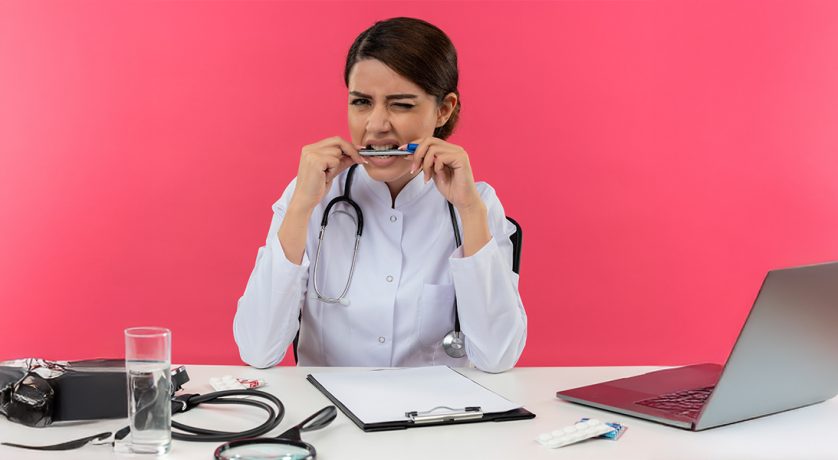5 Common Mistakes People Make During a Dental Emergency and How to Avoid Them
October 1, 2025
1. Ignoring Immediate Symptoms: Act the Moment Trouble Starts
The first sign—a sharp edge, bleeding gum, or sudden ache—often feels easy to shrug off. Many people hope discomfort will fade while they finish work or get through a weekend trip. Delay allows bacteria to invade pulp tissue, turn a small chip into a fracture, or transform mild sensitivity into a raging infection.
Instead, rinse with warm water to flush out debris, apply gentle pressure if bleeding occurs, and use a cold compress to reduce swelling. A swift online search for a dentist near me puts professional help within reach, even at late hours. Prompt treatment means simpler procedures, fewer medications, and better odds of saving the natural tooth.
2. Not Contacting a Dentist Right Away: Waiting Can Cost You
Phones feel heavy when you fear unpleasant news or bills, yet hesitating multiplies risk. A knocked-out tooth begins to die within 15 minutes; root surface cells require moisture and rapid replantation. Cracks spread under chewing forces. Infection from an abscessed molar can spread to the bloodstream and compromise overall health.
Call the practice — even after hours — before searching for home remedies online. Many offices reserve daily slots for same-day emergencies or share after-hours lines. Tell the team exactly what happened, when, and how severe the pain is. They will coach you on safe steps until arrival, such as storing an avulsed tooth in milk. Locating a dentist’s office near me beats sitting in an emergency room that may lack dental staff and charge more.
3. Relying on Questionable Home Remedies: Use Safe First Aid Only
Clove oil, aspirin paste, and super-glue rank high on social media but low on safety. Aspirin directly on soft tissue burns the cheek; clove oil can irritate nerve-rich pulp; glue traps bacteria under a brittle seal.
Stick to proven measures:
- Over-the-counter ibuprofen (within labeled doses) lowers inflammation and pain.
- Salt-water rinses reduce bacterial load and soothe gums.
- Orthodontic wax covers a jagged edge until repair.
Contact professionals—Quantum Dental offers clear guidance on which pain relievers pair well with prescriptions and when swelling signals a severe infection.
4. Underestimating After-Care: Healing Does Not End in the Chair
The appointment concludes, but recovery is only beginning. Skipping soft foods, forgetting to rinse, or smoking “just one” cigarette can reopen tissue, invite dry socket, or discolor new fillings. Prioritize rest, hydration, and adherence to your medication schedule.
Enhance success by preparing a comfort kit beforehand:
- Soft gel ice pack for cheeks
- Gauze squares and dental wax
- Small bottle of alcohol-free mouth rinse
- Spare phone charger so you never miss the follow-up call
These simple items help you respect the timeline your dentist outlines and protect your long-term oral health.
5. Mishandling Restorations: Treat Temporary Work Like Glass
Biting down on hard crust, chewing gum, or using teeth to open packaging can dislodge a temporary crown or weaken a filling’s margin. If a restoration loosens, retrieve every fragment and place them in a sealed container. Bring the pieces to your appointment; the dentist can assess whether re-cementing or replacing is necessary.
Avoid sticky or crunchy foods for at least 24 hours after any repair. Use a soft-bristled dental brush angled at 45 degrees to clean around the site without tugging. Floss by sliding gently out rather than snapping up.
Quick Reference: Do This First
- Rinse the mouth and the injured tooth fragment with lukewarm water.
- Apply a cold compress in 10-minute intervals.
- Place the knocked-out tooth in milk or saline.
- Phone the dentist within 30 minutes.
- Take ibuprofen if needed and not contraindicated.
Keeping this list on your fridge or in your phone notes shaves seconds off reaction time during a crisis.
Final Thoughts
Dental mishaps feel overwhelming, yet most long-term damage stems from hesitation, not the injury itself. Act on warning signs, call a trusted professional immediately, choose evidence-based first aid, and follow after-care instructions. These habits ease pain, speed recovery, and preserve your smile’s natural beauty for decades.

